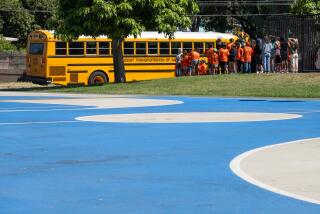Cool down before you go
- Share via
Olympic athletes wear them to boost their endurance. U.S. soldiers wear them to stave off heatstroke. With recent temperatures making Dante’s Inferno look like a spa vacation, cooling exercise garments may be an idea whose time has finally come.
Researchers have known that wearing cooling garments -- such as gel-filled vests -- to lower overall body temperature before endurance events enables athletes to delay overheating, thus operating at peak performance longer.
“There seems to be a temperature -- some call it a safety brake -- at which people poop out,” says Dr. William Roberts, past president of the American College of Sports Medicine.
But conventional wisdom and research have supported the notion that limbs benefit from being warmed up before exercise, not cooled down. The effect of cooling limbs -- such as legs before a cycling event -- hadn’t been extensively investigated.
Now, however, researchers have found that cooling legs before cycling in controlled warm-weather conditions also reduces heat strain, but without impeding performance.
Hein Daanen, an investigator at TNO, a private research institute in the Netherlands, and colleagues outfitted eight male cyclists with water-perfused tops and trousers. The garments, which contained tubes through which water circulated at a constant warm or cool temperature, were worn for 45 minutes before exercising, then removed. Then the cyclists pedaled for 40 minutes at a constant 100 rpms.
In four randomized trials with three or four days in between, researcher studied the effects of cooling both halves of the body; warming the upper body while cooling the lower half; cooling the upper body while warming the lower half; and no warming or cooling on either half.
The investigators found that -- as expected -- cooling the upper body led to reduced heat strain. So did cooling the lower body. Further, cooling the whole body before exercise reduced core temperature more than cooling just a part -- also without negative effects on performance.
The findings, published in the May issue of the International Journal of Sports Medicine, have relevance for weekend athletes as well as elite cyclists, says Lawrence Armstrong, professor of environmental and exercise physiology at the University of Connecticut’s Human Performance Laboratory.
“If you cool the body a little before you go out to exercise in the heat, you’ll probably be able to run a little farther or a little more intensely,” he says.
A less expensive way to beat the heat is to adjust your pace. “If you want to run five miles, but can only work out in the heat,” says Roberts, “go out for a mile the first day, then do the other four indoors. Then the next day, add a little distance.”
Still, if it’s cooling vests you want, they’re available online starting for less than $100.
The choice is yours.
More to Read
Go beyond the scoreboard
Get the latest on L.A.'s teams in the daily Sports Report newsletter.
You may occasionally receive promotional content from the Los Angeles Times.






